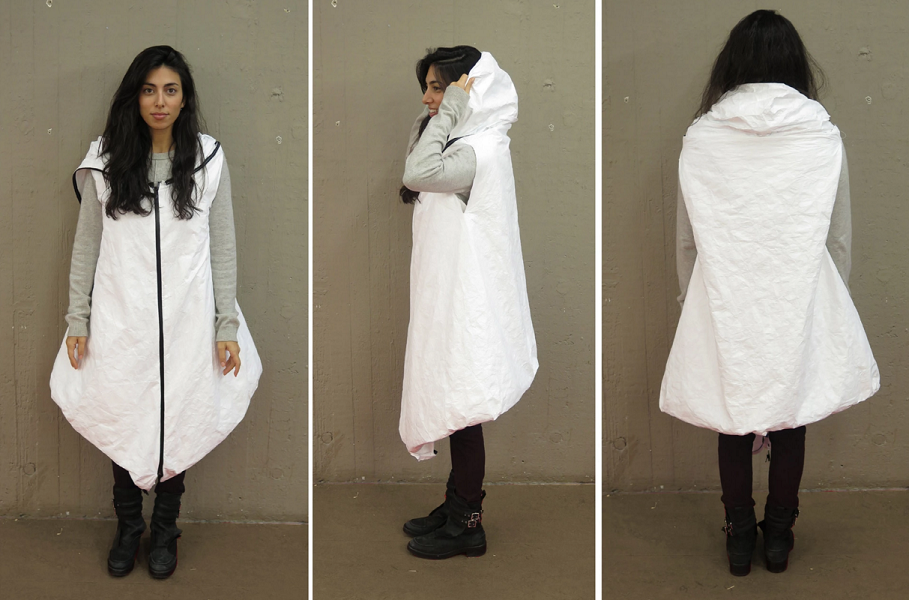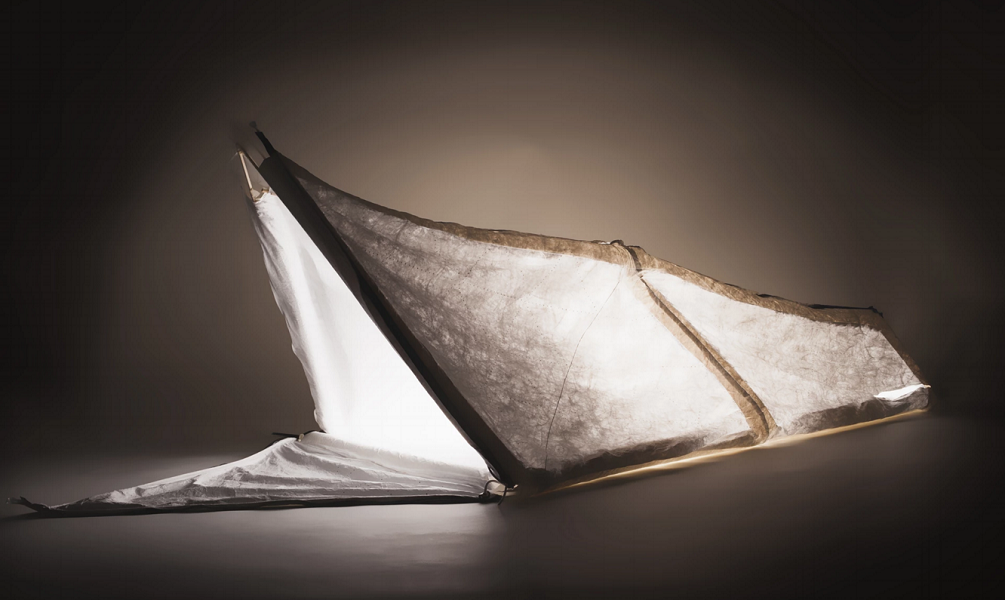Art World
Art Students Design Incredibly Useful Sleeping Bag Coat for Refugees
But will it actually work?

But will it actually work?

Cait Munro

A team of art and design students from the Royal College of Art have created a jacket that functions as a sleeping bag as well as a tent. With the help of a recently launched Kickstarter campaign, the designers hope to have the “wearable shelter” in the hands of Syrian refugees by June.
“Lack of adequate, watertight shelter and warm, waterproof clothing is a major issue in refugee camps across Europe,” student Ruben Van den Bossche told the Guardian.
The garment, which also boasts ample pocket room for storing personal objects, is crafted from Tyvek, a light yet durable material that is also waterproof. It is insulated using Mylar, a polyester material used for space blankets, among other items.

Photo: Anne Sophie Geay.
The project is led by professors Harriet Harriss and Graeme Brooker, and the student designers are Gabriella Geagea, Anne Sophie Geay, Cassie Buckhart, Eve Hoffmann, Anna Duthie, Jess Wang, Hailey Darling, Zara Ashby, Ruben Van den Bossche, and Giulia Silovy. The fashion brand WALL London mentored the students on the development of a prototype.
The students plan to work alongside several UK-based refugee agencies to both develop and distribute the wearing object, which is intended as a short-term solution to the displacement of millions of Syrians.
Not everyone approves of the project’s current design, however.
“It’s great that they’re trying to help. But it’s not going to be particularly effective if the temperature is minus 10 and you’re trudging through the Balkans,” Nick Harvey, a representative from the non-profit health organization Doctors of the World told the Guardian. “It looks more suitable for festival-going or possibly even for the UK homeless.”
Indeed, we can see the contraption going over quite well at arty hipster meccas like Coachella and Burning Man, but we hope it will find a more meaningful use. While its design is innovative, the wearable shelter already has a solid place in contemporary art. In 1997, artist Michael Rakowitz created the “paraSITE homeless shelter,” a portable place that harnesses energy from available air ducts.